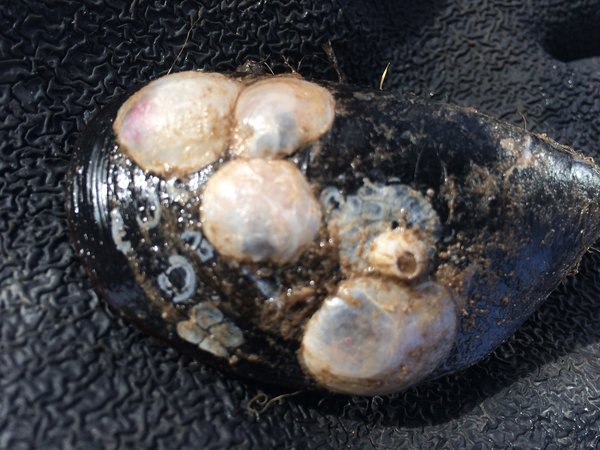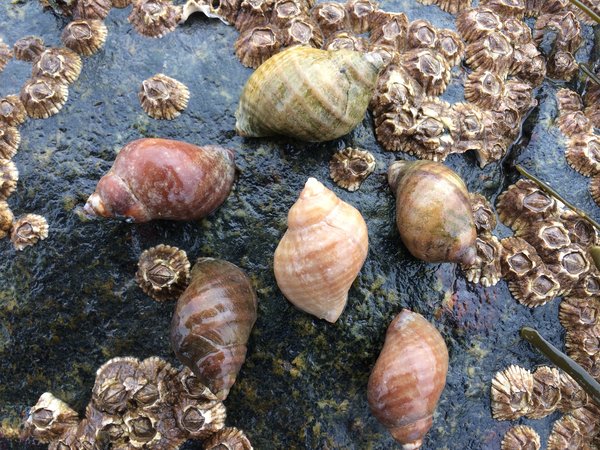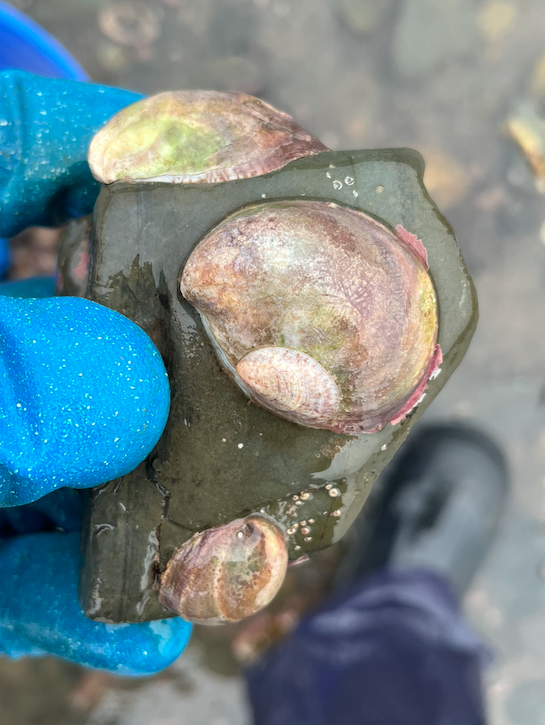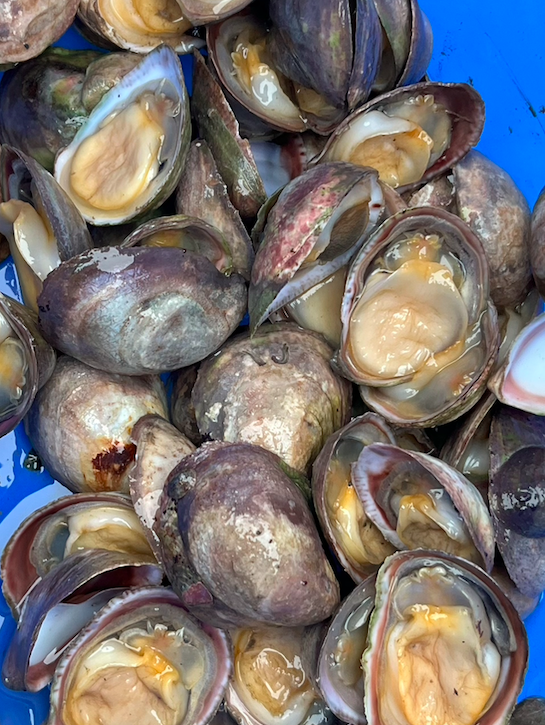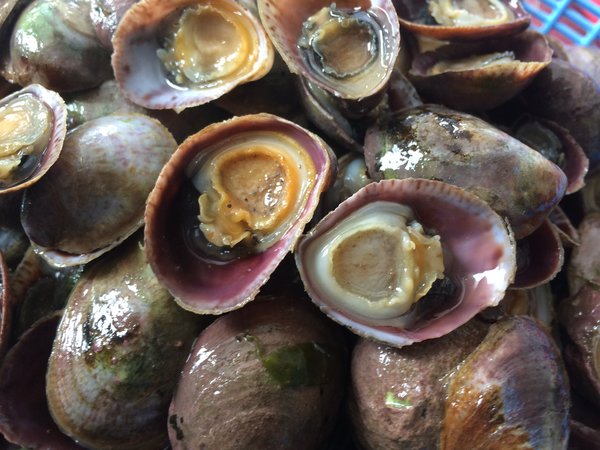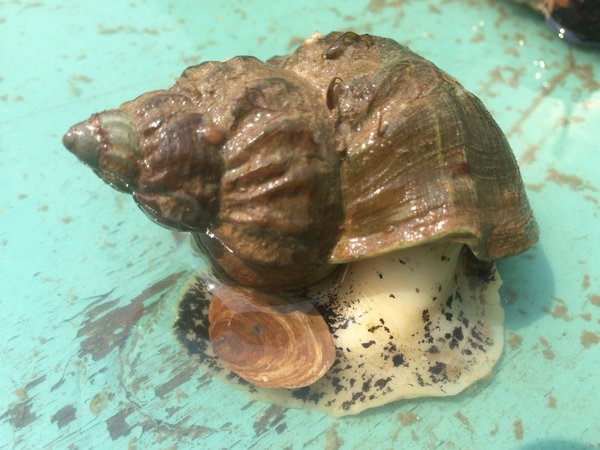 Image 1 of 6
Image 1 of 6

 Image 2 of 6
Image 2 of 6

 Image 3 of 6
Image 3 of 6

 Image 4 of 6
Image 4 of 6

 Image 5 of 6
Image 5 of 6

 Image 6 of 6
Image 6 of 6







Waved Whelk (Buccinum undatum)
Common name: waved whelk
Scientific name: Buccinum undatum
Locations: low water mark and deeper, on mussel beds and rocky shores
Seasonality: available year round
Colors: tan shells with creamy white foot, sometimes green with algal coating
Size: 2" - 3"
Collected: by hand or in whelk traps
Quantity: sold by the each
Common name: waved whelk
Scientific name: Buccinum undatum
Locations: low water mark and deeper, on mussel beds and rocky shores
Seasonality: available year round
Colors: tan shells with creamy white foot, sometimes green with algal coating
Size: 2" - 3"
Collected: by hand or in whelk traps
Quantity: sold by the each
Common name: waved whelk
Scientific name: Buccinum undatum
Locations: low water mark and deeper, on mussel beds and rocky shores
Seasonality: available year round
Colors: tan shells with creamy white foot, sometimes green with algal coating
Size: 2" - 3"
Collected: by hand or in whelk traps
Quantity: sold by the each

The speckled snail is visible as it moves across a surface. It appears there is a jingle shell attached to the back end of its soft body.

Whelk (Buccinum undatum) egg mass attached to a kelp holdfast.
Tidepool Tim says, “Waved whelks are like mini conch snails. This is the largest whelk we have in Maine - the only snail that grows larger is the moon snail. Whelks are commonly caught in lobster traps since they are attracted to the smelly bait. Whelks use their toothed radula to grind up the skins, cartilage, and bones left in the bait bags after the lobsters & sand fleas have eaten off all the flesh. In this case - they really help to recycle these substances back into the food chain. Whelks have a large egg-sized shell that has little 'waves' along the surface - hence the name.
Whelks have a large white spotted food and a long white tube-like siphon that protrudes out of the shell. Attached at the end of the foot is a round, finger-nail like operculum. This serves as a trap-door to seal the snail in its shell for protection. In the spring and summer waved whelks produce large clusters of eggs on rocks and kelp holdfasts. These each hatch into tiny little whelks in the summer months. They look like seed pods of some garden plant. Once all the eggs have hatched parts of the egg mass sometimes wash up on local beaches. Each egg sac has a tiny hole in it through which the young snail exited the shell. Whelks are growing in popularity as a seafood product in Maine. Some folks like to cook them and then pickle them like they would eggs with vinegar and garlic - others are eaten in pasta dishes.”

